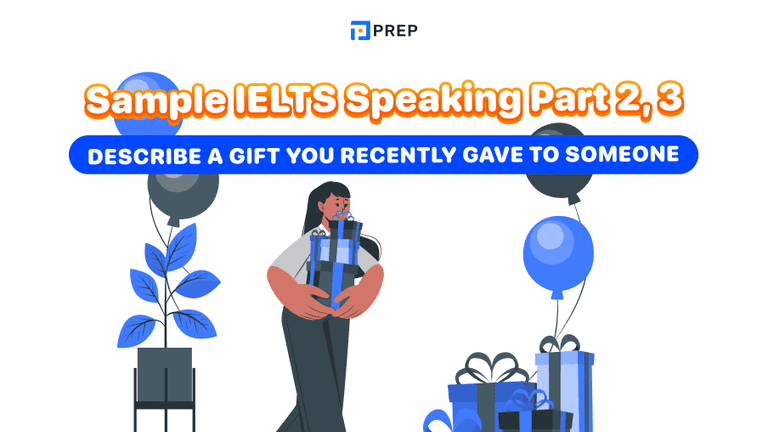Quantifiers in English: The Complete Guide from Rules to Real-World Use
Ever paused mid-sentence, wondering whether you should say "much" or "many"? You're wrestling with one of English grammar's trickiest concepts: quantifiers in English. These seemingly simple words—like much, many, some, and few—describe quantity or amount, answering the fundamental questions "How much?" and "How many?" While they appear straightforward, quantifiers follow specific rules that can transform your English from uncertain to confident. This comprehensive guide will demystify these rules and show you exactly when and how to use each quantifier correctly.
- I. What Are Quantifiers in English?
- II. The Most Important Rule: Countable vs. Uncountable Nouns
- III. Quantifiers Chart: Which Word to Use with Which Noun
- IV. How to Use 'Much', 'Many', and 'A Lot Of'
- V. The Difference Between 'A Little'/'Little' and 'A Few'/'Few'
- VI. Beyond the Basics: Nuances and Common Errors
- VII. Conclusion

I. What Are Quantifiers in English?
Stop for a moment and imagine this scenario: you're writing an important email and your cursor hovers over the phrase "I don't have much time." Suddenly, doubt creeps in—should it be "many time"? This moment of uncertainty illustrates exactly why mastering quantifiers in English becomes essential for confident communication.
What are quantifiers?
Quantifiers in English are words that indicate quantity. They typically appear before a noun and modify that noun. In English, some quantifiers are used with uncountable nouns while others are used with countable nouns; some quantifiers can be used with both countable and uncountable nouns. For example:
-
There are many bikes on the road. ➞ Bikes is a countable noun.
-
I don't earn much money. ➞ Money is an uncountable noun.
-
There's some cake in the kitchen if you'd like it. ➞ Cake is a countable noun.
-
Here's some news you might be interested in. ➞ News is an uncountable noun.
II. The Most Important Rule: Countable vs. Uncountable Nouns
Here's the truth no grammar book wants to admit: 99% of quantifiers in English confusion disappears once you master this single distinction. Understanding nouns and quantifiers isn't about memorizing endless lists—it's about recognizing one fundamental pattern that governs everything. This distinction acts like a sorting machine in your brain, automatically directing you toward the correct quantifier choice. Master this concept, and quantifier selection becomes as effortless as breathing.
1. Countable Nouns: Items Your Brain Can Separate and Stack
The Simple Test: Can you put a number in front of it? Can you make it plural? If yes, you're dealing with countable territory when using quantifiers in english.
Countable nouns behave like coins in your pocket—each one distinct, separate, and countable. One coin, two coins, fifty coins. The pattern holds whether you're discussing concrete objects or abstract ideas. One chair transforms effortlessly into two chairs because your mind recognizes each piece of furniture as an individual unit occupying its own space.
This principle extends beyond physical objects into the realm of ideas and experiences. Consider how one problem becomes several problems, or how a single opportunity multiplies into many opportunities. Each instance stands alone, maintaining its individual identity even when grouped with others—a crucial concept for understanding quantifiers in english.
Memory Trick: If you can visualize picking up individual pieces or pointing to separate examples, you're dealing with countable nouns.
2. Uncountable Nouns: Substances That Flow as One
The Reality Check: Does it flow, spread, or exist as a continuous mass? Does adding 's' sound completely wrong? Welcome to uncountable noun territory—essential knowledge for using quantifiers in english correctly.
Think of uncountable nouns as substances that resist being divided into neat, separate packages. Water serves as the classic example—it flows, pools, and moves as one continuous entity. Saying "waters" feels awkward because water doesn't naturally break into countable units (unless you're referring to different bodies of water like "the waters of the Pacific").
Three Categories to Remember:
-
Materials and Substances: water, air, gold, flour
-
Abstract Concepts: information, advice, love, happiness
-
Activities and Fields: homework, research, music, traffic
Information illustrates this perfectly—it accumulates, spreads, and grows, but never divides into "informations." You might collect pieces of information or gather bits of data, but the core noun remains singular. Similarly, advice flows from person to person as ongoing wisdom, never fragmenting into countable "advices."
III. Quantifiers Chart: Which Word to Use with Which Noun
Bookmark this section for quick reference—this chart serves as your essential cheat sheet for choosing the correct grammar quantifier every time you speak or write. Understanding which quantifiers in English work with countable nouns, uncountable nouns, or both types will eliminate guesswork from your English communication.
1. Quantifiers in English with Countable Nouns
|
Quantifier |
Usage |
Example |
|
many |
Used with plural nouns to indicate a large number. |
Many students attended the class. |
|
both |
Refers to two people or things considered together. |
Both books are interesting. |
|
several |
Indicates more than a few but not a specific large number, used with plural nouns. |
Several people are waiting for the bus. |
|
every/ each |
Used with singular nouns; "Every" emphasizes all members of a group, while "Each" focuses on individual items. |
Every student has a book. Each student received a different prize. |
|
a few/ few |
"A few" indicates a small but sufficient number; "Few" implies a very small number, often insufficient. |
A few people came to visit. Few people know the answer. |
|
a large/ great number of |
Refers to a substantial quantity of plural nouns. |
All the staff didn't expect such a large number of people to attend the performance. A great number of tourists visit this city every year. |
|
a majority of |
Indicates the greater part of a group, used with plural nouns |
A majority of the committee agreed on the decision. |
|
a couple of |
Generally refers to two or a small number of items, used with plural nouns. |
I need a couple of hours to finish. |
|
a pair of |
Indicates two things that are similar or complementary, used with singular or plural nouns. |
I bought a pair of shoes. |
2. Quantifiers in English with Uncountable Nouns
|
Quantifier |
Usage |
Example |
|
much |
Refers to a large amount of an uncountable noun. |
There isn’t much water left in the cup. |
|
a great deal of |
Indicates a significant amount of an uncountable noun. |
Emi spent a great deal of time on the project. |
|
a quantity of |
Refers to a specific amount of an uncountable noun. |
We need a quantity of sugar for the recipe. |
|
a large/ great amount of |
Indicates a substantial quantity of an uncountable noun. |
Linda would like to buy a large amount of soda. John has a great amount of experience in this field. |
|
a little/ little |
"A little" signifies a small but adequate amount; "Little" stresses an insufficient amount. |
Add a little salt to the dish. There is little happiness for a reward. |
|
a bit (of) |
Refers to a small amount of an uncountable noun. |
I need a bit of advice on this problem. |
|
less |
Used for comparing quantities of uncountable nouns, indicating a smaller amount. |
We need less salt in this recipe. |
3. Quantifiers in English with Both Countable and Uncountable Nouns
|
Quantifier |
Usage |
Example |
|
a lot of/ lots of |
Used to indicate a large quantity of both countable and uncountable nouns. |
There are a lot of pencils on the table. We have lots of time to complete the task. |
|
some |
Refers to an unspecified amount, usually a small quantity, applicable to both countable and uncountable nouns. |
Can I have some apple juice? We need some people for the event. |
|
plenty of |
Indicates a very large amount, applicable to both countable and uncountable nouns. |
There are plenty of cats in the house. |
|
most/ most of |
Refers to the majority of a group, used with both countable and uncountable nouns. |
Most people like to eat banana. Most of the students failed the exam. |
|
any |
Used in negative sentences and questions, or with interrogative words, applicable to both countable and uncountable nouns. |
Do you have any questions? I don’t have any money left. |
|
all |
Refers to the entirety, applicable to both countable and uncountable nouns. |
All the cookies were eaten. |
|
enough |
Indicates a sufficient amount to meet a need, applicable to both countable and uncountable nouns. |
We have enough tables for students. |
|
no |
Indicates the absence of something, applicable to both countable and uncountable nouns. |
There is no salt in the coffee. |
|
none |
Indicates that no items are present from a mentioned quantity, applicable to both countable and uncountable nouns. |
None of the answers were false. |
This systematic organization reveals the logical patterns within English grammar quantifiers, helping you internalize the rules through visual association rather than rote memorization.
IV. How to Use 'Much', 'Many', and 'A Lot Of'
These three quantifiers in English share similar meanings but follow distinct usage patterns that separate confident speakers from hesitant ones. Understanding when to use each quantifier—and recognizing their natural contexts—will make your English sound more fluent and native-like.
1. When to Use 'Many'
Many works with countable nouns and sounds natural in questions and negatives:
-
Questions: "How many people attended?" / "Did many students pass?" Negatives: "There aren't many tickets left" / "Not many restaurants serve authentic food"
-
Note: Many in positive statements sounds formal and textbook-like.
2. When to Use 'Much'
Much pairs with uncountable nouns following the same question-and-negative pattern:
-
Questions: "How much time do we have?" / "Does this require much preparation?"
-
Negatives: "I don't have much energy" / "There isn't much difference"
-
Note: Much in positive statements sounds stiff and academic.
3. The Natural Choice ('A Lot Of')
-
Here's the insider secret: Native speakers choose "a lot of" for positive statements with both noun types:
-
With countables: "She has a lot of friends" ✓ (not "many friends") With uncountables: "He drinks a lot of water" ✓ (not "much water")
This preference distinguishes fluent speakers from textbook learners—master this pattern for natural-sounding English.
V. The Difference Between 'A Little'/'Little' and 'A Few'/'Few'
These paired quantifiers in English carry emotional undertones that significantly impact your message's meaning, representing one of the most nuanced aspects of countable and uncountable quantifiers. The presence or absence of the article "a" completely transforms the speaker's attitude from optimistic to pessimistic, making this distinction crucial for accurate communication.
1. Expressing Hope: "A Little" and "A Few" (Positive Tone)
With the article "a," you sound optimistic about small amounts:
"A little" + uncountable nouns = sufficiency:
-
"I have a little money" (implies: enough for now, feeling secure)
-
"There's a little time left" (implies: we can still accomplish something)
"A few" + countable nouns = adequate quantity:
-
"I know a few people here" (implies: I won't be lonely)
-
"We have a few options" (implies: we're not stuck)
2. Expressing Concern: "Little" and "Few" (Negative Tone)
Without "a," you sound pessimistic about inadequate amounts:
"Little" + uncountable nouns = scarcity:
-
"There is little hope" (implies: near-hopelessness)
-
"We have little time" (implies: we're in trouble)
"Few" + countable nouns = insufficient quantity:
-
"Few people trust politicians" (implies: a serious problem)
-
"Few options remain" (implies: we're nearly out of choices)
The takeaway: "A little/a few" = glass half full. "Little/few" = glass nearly empty. Choose wisely based on the attitude you want to convey.
VI. Beyond the Basics: Nuances and Common Errors
Moving from basic rules to refined usage requires understanding subtle patterns and avoiding frequent mistakes that mark non-native speakers. These advanced insights of quantifiers in English will fine-tune your skills and help you navigate complex quantifier situations with confidence.
1. The Role of 'Of'
The preposition "of" becomes necessary when quantifiers precede pronouns, demonstratives, or possessive determiners rather than simple nouns.
Pattern Recognition:
-
Quantifier + my/your/his → needs "of"
-
Quantifier + the/this/that → needs "of"
-
Quantifier + pronouns → needs "of"
|
With "Of" ✓ |
Without "Of" ✓ |
|
Many of my friends |
Many friends |
|
Some of the books |
Some books |
|
Few of them |
Few opportunities |
2. Common Mistakes to Avoid
Several predictable errors reveal incomplete understanding of countable and uncountable nouns and quantifiers in English, making speakers sound uncertain about basic grammar rules:
|
❌ Common Mistake |
✅ Correct Version |
Why It's Wrong |
|
"I have many homeworks" |
"I have a lot of homework" |
Homework = uncountable, never plural |
|
"She gave me a little books" |
"She gave me a few books" |
Books = countable, use "a few" |
|
"How much people came?" |
"How many people came?" |
People = countable, use "many" |
|
"There aren't much opportunities" |
"There aren't many opportunities" |
Opportunities = countable, use "many" |
|
"I need a few water" |
"I need a little water" |
Water = uncountable, use "a little" |
*Quick Self-Check: Can you count it? Use "many/few." Can't count it? Use "much/little."
These mistakes typically stem from directly translating from other languages or misunderstanding the countable/uncountable distinction, but recognizing these patterns helps you self-correct before speaking.
VII. Conclusion
Mastering quantifiers in English boils down to understanding countable versus uncountable nouns—this single insight unlocks confident communication. Remember three key points: use "a lot of" for natural-sounding positive statements, the article "a" transforms tone from negative to positive, and daily practice makes these choices automatic. Apply these patterns consistently, and your English will gain the precision that marks truly fluent speakers.

Hi I'm Chloe, and I am currently serving as an Product Content Administrator at Prep Education. With over five years of experience in independent online IELTS study and exam preparation, I am confident in my ability to support learners in achieving their highest possible scores.
Comment
Premium content
View allPersonalized roadmap
Most read












